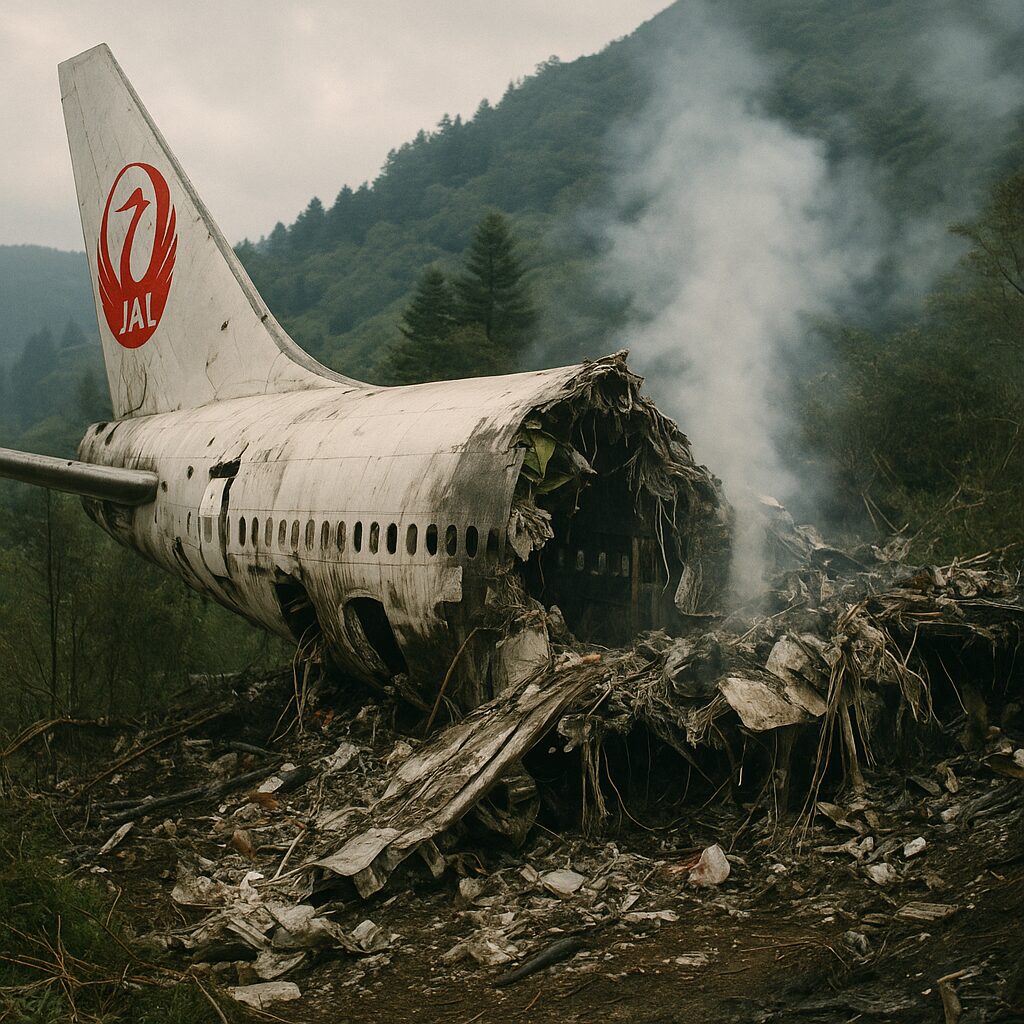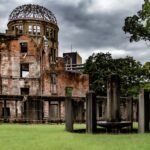Japan Airlines Flight 123 Survivors

✈️ Japan Airlines Flight 123 Survivors
Tragedy, Resilience, and a Nation’s Memory
On August 12, 1985, Japan Airlines Flight 123 suffered a catastrophic failure mid-air and crashed into the mountains of Gunma Prefecture. With 520 fatalities out of 524 passengers and crew, it remains the deadliest single-aircraft accident in aviation history. Only four people survived—each under extraordinary circumstances. This article explores the gripping accounts of the Japan Airlines Flight 123 survivors, their experiences during and after the disaster, and the broader legacy left by the tragedy.
The Disaster at a Glance
- Flight: Japan Airlines Flight 123
- Aircraft: Boeing 747SR-46
- Route: Tokyo (Haneda) to Osaka (Itami)
- Fatalities: 520
- Survivors: 4
- Crash site: Osutaka Ridge, Gunma Prefecture
- Cause: Improper repair of rear pressure bulkhead, leading to explosive decompression and complete hydraulic failure
- Flight time after failure: 32 minutes
Japan’s Air Self-Defense Force radar recorded the aircraft’s erratic altitude changes. Despite the crew’s heroic efforts to keep the aircraft airborne, they ultimately lost control. The plane collided with a remote mountain range, making immediate rescue difficult. Rescue teams did not reach the crash site until the following morning—approximately 14 hours later.
Survivor #1: Keiko Kawakami – The Youngest Miracle
- Age at the time: 12 years old
- Seat location: Rear cabin, traveling with her mother and younger sister
- Circumstances: On a family trip; her father had taken a separate flight
Keiko Kawakami was the youngest of the Japan Airlines Flight 123 survivors. Her mother and sister died in the crash, while she remained pinned under wreckage but conscious. Her rescue—hoisted by rope into a helicopter—was broadcast live on Japanese television, capturing the hearts of millions. This image became one of the most iconic of the entire tragedy.
Media Pressure
Kawakami was relentlessly pursued by the media. During her hospital stay and adolescence, journalists frequently followed her, labeling her a “miracle survivor.” This attention deeply affected her mental health. She eventually issued a statement:
“I am not a star. Please leave me alone.”
Even during her hospital recovery, the media surrounded her, hoping for interviews and photos. She was forced to cope with intense public attention while grieving the loss of her family. Despite her desire for privacy, her story remains one of the most powerful symbols of survival in Japanese history. She has since withdrawn from public life.
Survivor #2: Yumi Ochiai – The Off-Duty Flight Attendant Who Helped Explain the Crash
- Age at the time: 26 years old
- Seat location: Rear section, traveling alone as a passenger
- Circumstances: Off-duty Japan Airlines flight attendant
Ochiai’s professional background made her survival particularly significant. Not only did she live through the crash, but she also provided vital eyewitness testimony about events on board—clarifying crew actions, cabin behavior, and structural failure cues. Her recollections were later used to reconstruct the in-flight chaos and helped investigators understand how the crew and passengers responded during the 32-minute ordeal.
She recalled the terrifying moments of decompression, the loss of control, and how passengers held hands and recited prayers together. Her presence among the Japan Airlines Flight 123 survivors was crucial to piecing together what went wrong.
She returned to work at Japan Airlines after recovery and later chose to step out of the spotlight. Despite the trauma, she was praised for her composure and invaluable contributions to the investigation.
Survivor #3: Hiroko Yoshizaki – A Daughter’s Quiet Courage
- Age at the time: 34 years old
- Seat location: Rear of the plane, next to her mother
- Circumstances: Traveling with her mother, who died in the crash
Yoshizaki was conscious after the crash and able to crawl away from the wreckage, possibly increasing her chances of survival. She later described waking up surrounded by devastation and realizing she was one of the few still alive.
In one of the few interviews she gave, she reflected on the pain of survival:
“You wonder why you lived when the person right next to you didn’t.”
Her emotional recovery was complicated by the loss of her mother. Like the others, she preferred to live a quiet life and stayed largely out of the public eye.
Survivor #4: Akiko Sugino (now Sawada) – The Silent Widow
- Age at the time: 29 years old
- Seat location: Rear cabin, traveling with her husband
- Circumstances: Returning from a trip with her husband, who perished
Sugino was thrown from her seat and landed in a part of the wreckage that did not ignite. She was found with serious injuries but survived.
Emotionally, she bore the weight of being widowed in the crash. She never gave media interviews and withdrew from the public eye early, her life marked quietly by remembrance. Unlike other Japan Airlines Flight 123 survivors, almost nothing is publicly known about her post-recovery years.
The Death of Kyu Sakamoto – A National Icon Lost
Among the deceased was Kyu Sakamoto, a beloved Japanese pop singer whose song “Sukiyaki” (originally “Ue o Muite Arukou”) became a global sensation. In 1963, he became the first Asian artist to reach No. 1 on the U.S. Billboard Hot 100, making him internationally famous.
Sakamoto’s death in the crash stunned fans worldwide and added an additional layer of tragedy to the incident, as many mourned both a national disaster and the loss of a musical legend. His legacy continues to be celebrated in Japan and beyond.
Why These Four Survived
Several factors contributed to the survival of Kawakami, Ochiai, Yoshizaki, and Sugino:
- Rear cabin seating: The rear section experienced less violent impact and limited fire.
- Seatbelt use: All were wearing seatbelts at the time of impact.
- Crash dynamics: Some survivors were shielded by softer terrain or seat structures.
- Delayed fire ignition: Sections near the rear were slower to catch fire, allowing some survivors to escape flames.
- Luck and resilience: A cruel and random combination of conditions helped spare their lives.
️ Legacy and Remembrance
Each year on August 12, bereaved families and members of the public climb to the Monument to the Souls at the Osutaka Ridge crash site. In addition, the Japan Airlines Safety Promotion Center at Haneda Airport features wreckage, artifacts, and testimonies to educate current and future aviation professionals.
This center preserves the memory of the tragedy and serves as a solemn reminder of the importance of rigorous maintenance standards and disaster preparedness.
Conclusion: Survival and Silence
The four Japan Airlines Flight 123 survivors endured both physical trauma and emotional wounds that would last a lifetime. Though each chose a different path—some more public than others—all faced a common challenge: to live on when so many others could not.
Their stories remind us that the human cost of aviation disasters extends far beyond impact zones and black boxes. It reaches deep into questions of fate, memory, and healing.










